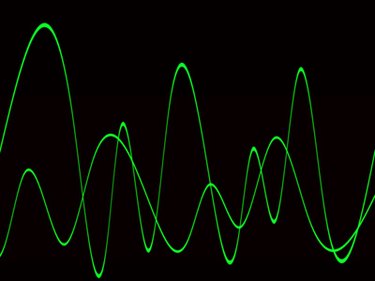
Oscilloscopes are measuring instruments used to test signal voltages in electronic devices such as television and radio broadcasting equipment, as well as audio recording equipment. Digital storage oscilloscopes have the advantage of capturing and logging electronic events that may have occurred when no one was present, or when observation was otherwise impossible. In addition to this feature, oscilloscopes have a number of advantages over other similar diagnostic tools, such as voltmeters.
Graphic Representations
Video of the Day
One advantage of digital storage oscilloscopes over voltmeters is that they can show signals graphically, allowing for a more intuitive visual diagnosis of the source of unexpected voltage. Voltmeters register only the presence of unexpected voltage, necessitating further diagnostics and troubleshooting. A digital storage oscilloscope may measure the same voltage and reveal oscillations in the affected circuit. Visual displays of the precise shape or timing of a pulse, which digital storage oscilloscopes offer, are helpful and sometimes necessary.
Video of the Day
Signal Tracing
Digital storage oscilloscopes allow technicians to probe individual components and connections within electronic devices, acting as a simple signal tracer, to determine the specific malfunctioning part. In measuring the functions of each individual component, the oscilloscope can find where an expected signal is absent or incorrect. In addition to locating malfunctions, the oscilloscope can measure minor variations in the operations of other components and alert the technician to the eventual need for replacement or fine tuning as well, and it can identify working parts to prevent erroneous replacement.
Testing New Circuitry
In shaking down newly designed circuitry for faults, the oscilloscope can ensure the proper functioning of the device or identify design flaws such as bad voltage levels and electrical noise. A dual-trace scope can allow technicians to view both the electronic device's clock signal and test signal, ensuring that the internal clock responsible for metering out the operations of other components is operating correctly.